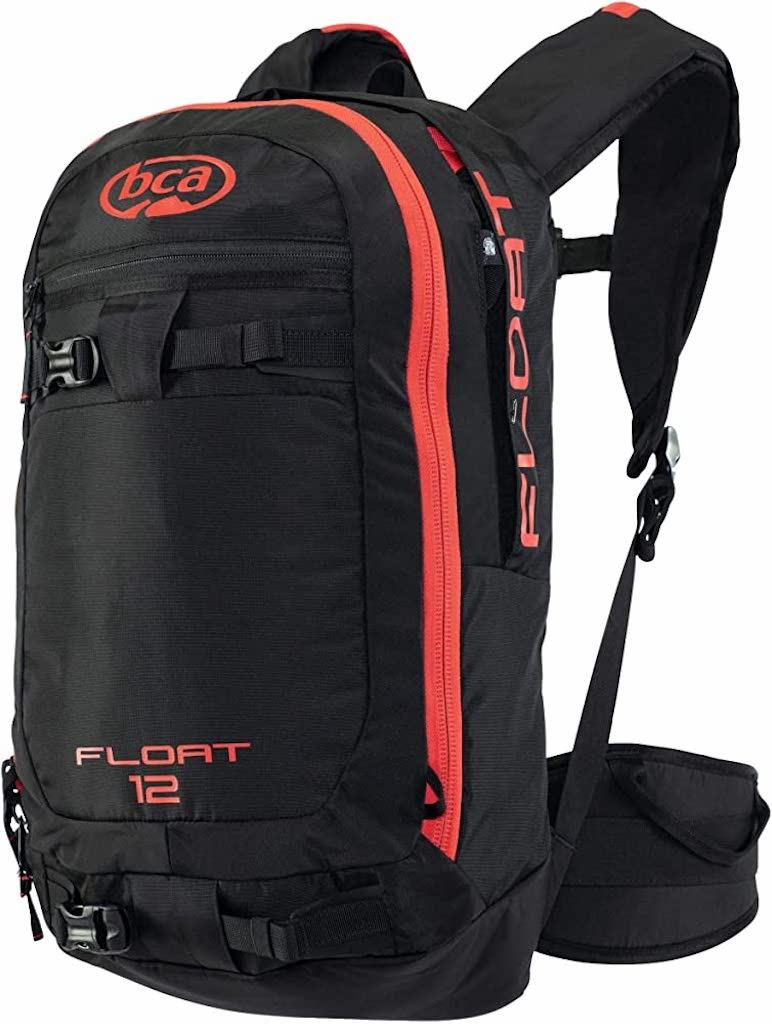
This backpack is used by skiers in avalanche-prone terrain. It contains a high-pressure bottle with compressed air to inflate rapidly in case of an avalanche. Pilots transporting this equipment need to ensure that the pressure bottle is empty.
You might think “hazmat” is not an issue for business aircraft and that you’ve never carried a hazardous material on board, but guess again.
If you’ve carried fly fishermen, hunters, campers, scuba divers or skiers headed for an extreme skiing adventure, you’ve probably carried hazmat. Have you ever carried a survival kit that contains a flare gun, or how about fingernail polish, batteries or a thermometer? These are examples of apparently “innocent” items that can pose a risk to the aircraft and its occupants.
It is entirely possible that your passengers will not recognize the potential hazard of an item in their luggage. This occurred to me on the ramp at Bozeman, Montana, when picking up clients to fly back to California. As I walked into the FBO to greet the clients, their baggage included the characteristic carrying cases for exquisite fly rods. They had been fly fishing on some of my favorite waters nearby, which also happen to coincide with grizzly bear habitat. Wise outdoor adventurers carry bear spray cannisters for self-defense in that terrain.
After establishing a positive rapport with the clients about the flies they successfully used on these waters, I said, “I always had the spooky feeling that I needed to watch over my shoulder during each cast to see if a grizzly was behind me. You were carrying bear spray, of course?” I did this with a tone and body language that insinuated they were “wise outdoorsmen” by having bear spray, to which they quickly answered, “Oh, you bet!”
Instead of focusing on a recitation of the federal regulation prohibiting the carriage of that hazmat, in a couple of sentences I explained the considerable risk to our safety if one of those cannisters released its noxious agent in the confines of the aircraft cabin. It quickly convinced these clients that we couldn’t carry bear spray on the aircraft.
Hazmat Regulations
The statutory definition of a hazardous material is something harmful to persons, to goods or property, or any substance that can cause a hazard to control of the aircraft during the flight. This could be a corrosive liquid that spills and seeps onto the control cables, causing corrosion on those cables and compromising their strength. It could be an explosive that can cause an intense fire that may burn through structural members.
Hazmat also can be a substance that is noxious to the aircraft occupants, such as spilled fingernail polish, which produces an odor that can affect respiration. While the potential hazard of a hazmat may not seem like an issue during flight, it can certainly become an issue during an emergency egress on the ground. For instance, consider the hazard created by firearm ammunition that may discharge during a post-crash fire.
Title 49 of the U.S. Code of Federal Regulations (otherwise known as the Hazardous Materials Regulations, or “HMR”) deals with the transportation of hazmat and applies to aircraft of U.S. registry, anywhere, and any aircraft operating in the United States in air commerce. These regulations provide guidelines for communicating the presence of a hazmat in a package, how to classify it, how to package the hazmat properly, how to mark the package correctly, how to put the right labels on the package, how to notify future handlers about the hazmat, how to certify that it has been handled the right way, and finally, how to select the proper transportation mode to be used.
Transporting Lithium Batteries
Probably the most common hazmat carried on business aircraft these days are lithium batteries. There are several videos of lithium batteries combusting that will convince anyone who has any lingering doubts about the inflight fire risk they pose. These videos show the immense heat produced by a lithium battery fire and also illustrate that the standard fire-fighting equipment in aircraft are insufficient for controlling these fires.
Many of our modern computing and communication devices are powered by lithium batteries. These items should be kept in carry-on baggage. If you have watched the videos of lithium battery fires, then you can plainly see the unacceptable risk posed if these are packed in a section of the aircraft that cannot be accessed immediately.
Spare lithium batteries must be carried with the passenger in the aircraft cabin. Any lithium-powered devices or spare batteries need to be protected from damage, accidental activation or short circuits. Battery terminals should be protected by manufacturer’s packaging or covered with tape and placed in separate bags to prevent short circuits. Damaged, defective or recalled lithium batteries must not be carried, due to the safety concern of overheating or catching on fire.
Recreational devices such as hoverboards and self-balancing scooters are powered by lithium batteries. The same precautions must be followed for these as well. A device that exceeds 160 Wh (watt-hours) is prohibited from carriage. This pertains to most unicycle scooters and Segway-type scooters.
Outdoor recreation activities may include equipment that can be a hazard to the aircraft, as we explain in Part 2 of this article.





